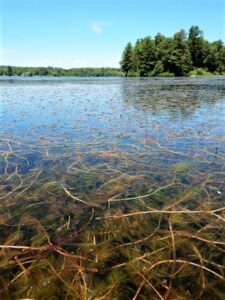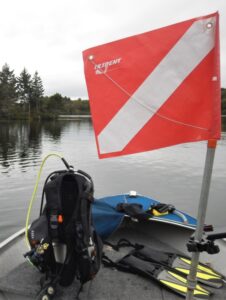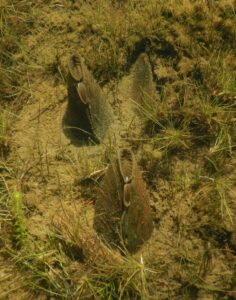 Aquatic Invasive Species (AIS) Inventories
Aquatic Invasive Species (AIS) Inventories
AE scientists have worked closely with Vermont ANR, lake associations, the Lake Champlain Committee and the Lake Champlain Basin Program on inventorying and controlling aquatic invasive species on a wide range of projects in Vermont. These include:
- Conducting surveys for Eurasian watermilfoil (and other aquatic invasive plants) in numerous lakes throughout Vermont.
- Developing an Asian Clam early detection program in Lake Champlain.
- Surveying water chestnut in difficult to access wetlands using an aerial drone.
- Monitoring incipient zebra mussel populations in Lake Memphremagog.
- Conducting surveys for and small-scale harvesting of water chestnut in the Lake Champlain Basin
 Aquatic Plant Inventories
Aquatic Plant Inventories
In addition to AIS species inventories, AE scientists regularly conduct inventories of native aquatic vegetation. These inventories include developing species lists, conducting rare species inventories, and identifying dominant species assemblages. As part of this work, AE has developed an aquatic natural community classification which can be used to map aquatic communities in a lake and more fully understand these biologically rich areas. Knowing where significant aquatic communities are and which are being threatened by AIS helps in developing management plans to protect these communities. These management plans, along with continued monitoring and control, can lead to a more balanced aquatic ecosystem and a cleaner lake.

Freshwater Mussel Studies
Freshwater mussels are considered one of the most imperiled taxa in the world; in Vermont, 13 of the 18 native species are rare, threatened or endangered. AE scientists were trained on freshwater mussel identification and ecology at the U.S Fish and Wildlife Service Training Center. Since that time, AE has conducted numerous inventories for mussels in lakes and streams throughout the state, including:
- Inventory of freshwater mussels in the lower Poultney River including both qualitative and quantitative surveys.
- Inventory of mussels in the Lamoille River with a focus on assessing the population of the rare elktoe mussel.
- Inventory of freshwater mussels in the Missisquoi Wild and Scenic River, including the establishment of baseline data plots for long-term monitoring.
- Assessment of the impacts that zebra mussels are having on the native freshwater mussels in Lake Champlain.
- Statewide inventory on the population status of the state threatened eastern pearlshell mussel.
Featured Project

Lake Ninevah Aquatic Plant Surveys
Hired by Farm and Wilderness Conservation Inc., AE scientists conduct yearly inventories of native and non-native aquatic plants in Lake Ninevah. The goals of the surveys are to understand the native aquatic flora and to catch any Eurasian watermilfoil at an early stage before it becomes difficult to manage. Twice per year surveys are conducted throughout the lake using combination of visual surveys from a boat, snorkel surveys and SCUBA transect surveys. In addition, surveys are conducted using a professional grade underwater autonomous vehicle (UAV or underwater drone). Live video feed from the UAV camera is viewed from the boat so that Eurasian milfoil and other AIS can be identified and mapped.
